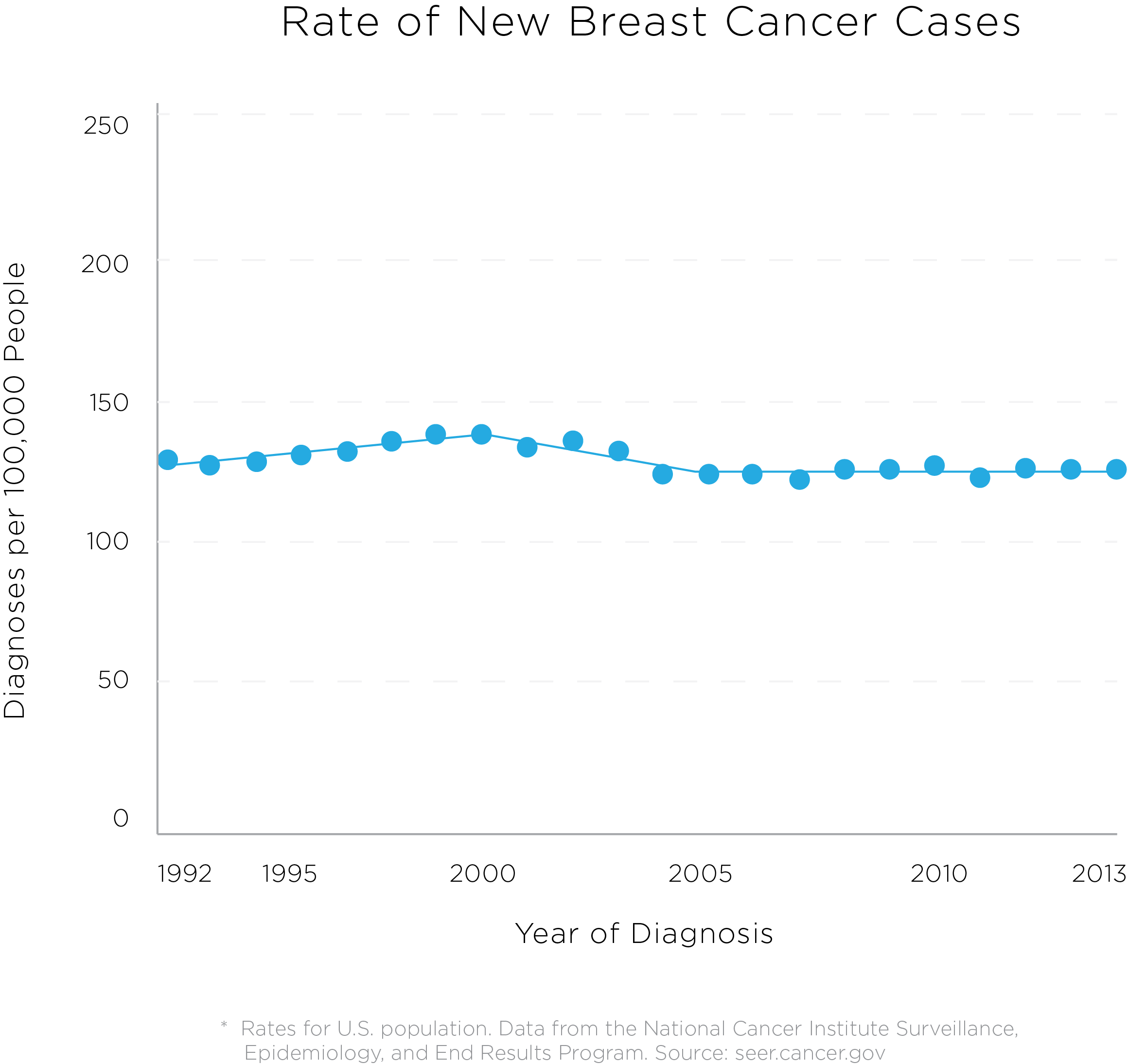
- There are more than 3 million women living with breast cancer in the U.S. and it is estimated that almost 250,000 women and 2,600 men will be diagnosed this year.
- About 1 in 8 women will be diagnosed with breast cancer in her lifetime.
- 83 percent of breast cancer patients survive for at least 10 years, but it still causes more than 40,000 deaths per year.
- Breast cancer is most commonly diagnosed after age 40, but risk begins to increase around age 30.
- Rates are highest among African-American and white women.
- Risk factors:
- Family history and genetics
- Women with inherited changes to the BRCA1 and BRCA2 genes are around five times more likely to develop breast cancer than the general population.
- Prolonged exposure to estrogen: early menstruation, late menopause, postmenopausal hormone treatment
- Obesity and lack of physical activity, especially in postmenopausal women
- Radiation
- Alcohol
- Exposure to polychlorinated biphenyls (PCBs) and ethylene oxide are suspected risks.
- Family history and genetics
Prevention tips
- Early detection can be lifesaving - breast exams, mammograms and other screening tests are valuable tools that should be discussed with your physician.
- Women considering hormone treatments for symptoms of menopause or for oral contraception methods should carefully consider the risks and benefits with their doctors.
- Limit alcohol intake.
- Maintain a healthy weight with a nutritious diet and regular physical activity, especially after menopause.
- Bisphenol A found in plastics and can linings can leach into food. Heating, acidic foods and drinks, and wear and tear to containers can increase the leaching of BPA.
- Certain drugs (tamoxifen, raloxifene and aromatase inhibitors/inactivators) can reduce breast cancer risk, however, these medications can result in other serious health risks, including other cancers. Talk to your doctor about the risks and benefits of these treatments.
Disqus Comments